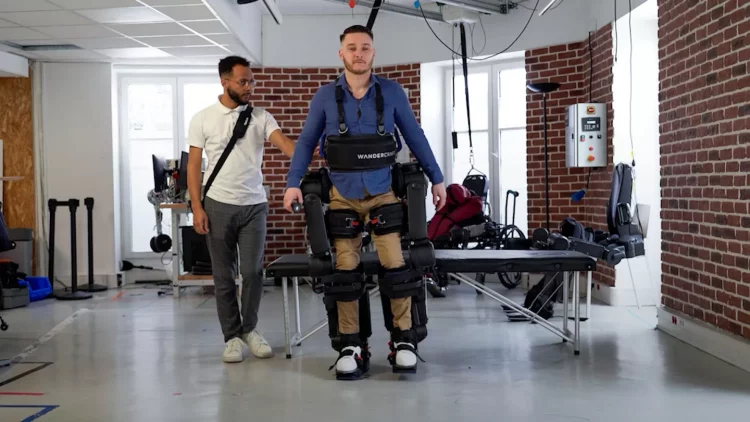The realm of human augmentation has been a topic of fascination for decades. From the first prosthetics to the cutting-edge bionic limbs of today, humans have continuously sought to overcome the limitations of their biology. Now, with advancements in biotechnology, robotics, and artificial intelligence, bionic enhancements are quickly evolving from a science fiction fantasy into an imminent reality. But are they truly the next step in human evolution, or merely an exciting experiment with unknown consequences? Let’s explore the possibilities.
A Brief History of Human Augmentation
Human augmentation is not a new concept. The first prosthetic limbs date back thousands of years, with ancient Egyptians using simple wooden and leather replacements for lost body parts. These early devices were rudimentary, often heavy and uncomfortable, but they represented the first attempts at improving physical capabilities beyond natural biological limits.
Fast forward to the 20th and 21st centuries, and we’ve seen remarkable progress. The invention of the mechanical prosthesis, powered by hydraulic systems or motors, brought greater mobility and comfort. The development of neural interfaces, which allow for direct brain-to-machine communication, has been a game-changer. Today, advancements in bionics are moving beyond mere replacement of lost function and into the realm of enhancement, where the human body’s natural capabilities are augmented, extended, or even transcended.
What Are Bionic Enhancements?
Bionic enhancements refer to the integration of electronic, mechanical, or synthetic components into the human body to improve or supplement natural functions. This could range from prosthetic limbs that allow individuals to move with greater speed and precision, to neural implants that enhance cognitive functions such as memory, learning, and decision-making.
These enhancements are typically powered by a combination of robotics, artificial intelligence, and biomedical technology. They may involve:
- Artificial Limbs: Prosthetics that mimic the function and appearance of natural limbs.
- Neural Interfaces: Devices implanted in the brain or nervous system to improve cognitive abilities or control prosthetics.
- Exoskeletons: Wearable structures that assist or enhance physical movement, allowing individuals to lift heavy objects or walk without tiring.
- Augmented Senses: Implants or external devices that provide enhancements to the senses, such as hearing aids or augmented vision for those with impaired eyesight.
While these enhancements are still in the early stages, they have the potential to revolutionize the way we interact with the world and extend our physical and mental abilities.

The Technological Foundations of Bionic Enhancements
1. Robotics and AI Integration
One of the most critical components of bionic enhancements is the development of robotics. Bionic limbs, for instance, are often powered by small motors and hydraulic systems that mimic the functionality of human joints and muscles. Advances in robotics, however, have focused on improving the precision, flexibility, and responsiveness of these prosthetics.
AI plays a crucial role in making bionic limbs more intuitive. By using machine learning algorithms, bionic limbs can “learn” the user’s movements over time and adapt to their specific needs. For example, a prosthetic arm can adjust its grip strength based on the object it’s holding, or a bionic leg can optimize walking patterns for greater efficiency.
2. Neural Implants and Brain-Machine Interfaces
Neural implants, such as deep brain stimulation (DBS) or brain-machine interfaces (BMI), are some of the most exciting developments in human augmentation. These devices allow for direct communication between the brain and external devices, such as robotic limbs or computers.
The technology has already been used to treat conditions such as Parkinson’s disease and epilepsy, but the future potential is even more exciting. Imagine a person being able to control a bionic limb or exoskeleton with nothing but the power of their thoughts, or a cognitive enhancement implant that allows a person to memorize information instantly.
3. Exoskeletons and Wearable Technologies
Exoskeletons are wearable devices that provide additional strength and endurance to the wearer. These devices are particularly useful in industries that require heavy lifting or repetitive motions, as they reduce the physical strain on the user’s body.
In the context of human augmentation, exoskeletons could help individuals with mobility impairments walk again, or allow soldiers to carry heavy loads for extended periods without fatigue. These devices are already being used in some military and industrial applications, and with improvements in AI and battery technology, their adoption is likely to grow.
4. Augmented Sensory Technologies
Bionic enhancements are also making strides in the realm of sensory augmentation. Devices that enhance vision, hearing, or touch are becoming more advanced, with applications for those with disabilities, as well as for those who simply want to experience the world in new ways.
For example, advanced hearing aids now allow users to selectively filter out background noise and focus on specific sounds, while retinal implants are helping restore partial sight to people who are blind. In the future, we may see sensory enhancements that go beyond basic restoration, enabling humans to see in the infrared spectrum or hear sounds outside the range of normal human hearing.
The Potential Benefits of Bionic Enhancements
Improved Quality of Life
For individuals with disabilities, bionic enhancements can offer life-changing benefits. Prosthetic limbs can allow people to perform tasks they once thought impossible, such as walking, running, or lifting objects. Neural implants may help those with neurological disorders regain lost functions, like the ability to speak or control movements.
For the elderly, bionic enhancements can improve mobility and reduce the risk of falls or injuries. Exoskeletons, for instance, could help older individuals maintain their independence for longer periods by giving them the strength and balance they need to carry out daily tasks.
Increased Human Capabilities
Beyond simply restoring lost function, bionic enhancements can amplify human capabilities. Athletes might use exoskeletons or robotic limbs to achieve unprecedented levels of performance. In professions like space exploration or underwater research, augmented humans could handle extreme environments that would otherwise be impossible for unenhanced humans.
In essence, bionic enhancements could allow humans to push the boundaries of what is physically or mentally possible. By augmenting the body with robotics, AI, and neural interfaces, we could unlock new levels of productivity, creativity, and endurance.
Longer Lifespan and Healthier Bodies
By replacing worn-out or damaged body parts with advanced bionic components, we could extend human lifespan and improve overall health. Bionic organs, such as artificial hearts or kidneys, are already in development, offering the possibility of long-term organ replacement without the need for donor transplants.
Exoskeletons and other assistive technologies could also play a role in maintaining physical fitness and preventing the degradation of the human body as we age. By providing constant support and aiding in muscle and joint movement, these technologies could delay the onset of degenerative conditions like arthritis or osteoporosis.
Ethical Considerations and Risks
While the potential benefits of bionic enhancements are undeniable, they also come with a host of ethical concerns and risks.

1. Socioeconomic Disparities
As with any advanced technology, there is a risk that bionic enhancements will only be available to the wealthy, creating further inequality in society. If only the rich can afford life-changing technologies, it could exacerbate existing social divisions and create a new class of “enhanced” individuals with abilities far beyond the average person.
2. Security and Privacy Risks
The integration of AI, robotics, and neural implants into the human body raises significant security concerns. If these devices are connected to the internet or controlled by external sources, they could be hacked or manipulated. This could lead to dangerous consequences, such as a prosthetic limb malfunctioning or a cognitive enhancement implant being hijacked by malicious actors.
3. Identity and Autonomy
Bionic enhancements could also challenge our concept of what it means to be human. As we merge more closely with technology, questions about identity and autonomy will arise. If a person’s cognitive abilities are enhanced through a neural implant, or if they replace their limbs with mechanical prosthetics, to what extent are they still the same person?
There’s also the question of autonomy—will individuals with enhanced capabilities be under constant surveillance, or will they lose the ability to make independent decisions if their bodies are controlled by AI?
The Future of Bionic Enhancements
The road ahead for bionic enhancements is both thrilling and uncertain. As technology continues to advance, we will likely see bionic enhancements move from experimental to mainstream. New materials, advanced AI, and improved neural interfaces will make bionic enhancements more efficient, cost-effective, and accessible.
However, the adoption of these technologies will not be without its challenges. We must grapple with questions of ethics, equity, and security, ensuring that the benefits of these enhancements are distributed fairly and that they are used in ways that enhance human dignity and autonomy.
Ultimately, the next step in human augmentation may not simply be about improving the body; it may be about redefining what it means to be human. With bionic enhancements, we could be entering a new era where the boundaries of human potential are only limited by our imagination.











































